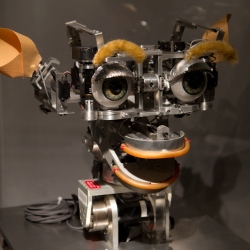
In the early 1950s, "machine intelligence" was a favourite topic among those who wanted to put the war years behind them and look forward to a sparkling science-led future.
From robots to electronic brains, the idea was that human beings would be able to concentrate on useful work, while programmable machines took care of useless toil. That unrealised dream still intrigues us today.
In April 1951 I was taken by my parents on an outing to the Bristol laboratory of neuroscience professor William Grey Walter, to see his robotic tortoises.
In a large room, half a dozen domed mechanised devices on wheels (roughly resembling tortoises) twirled and gyrated, avoided obstacles, backed away from the edges of their enclosure, and trundled apparently purposefully towards a light source beamed in their direction.
These, Grey Walter maintained, were the beginnings of artificial intelligence – machines which simulated human thought and behaviour using analogue electronics to mimic brain processes. I remember the grown-ups were delighted.
Back then, aged seven, I was a bit disappointed. These weren’t "toys" in any sense that I understood. But the memory of the visit flooded back last weekend when I encountered a piece of archive film of the tortoises in the Codebreaker exhibition at London’s Science Museum.
Codebreaker charts the life and legacy of the troubled mathematician Alan Turing, best known for his crucial work on the Bombe electro-magnetical device, used to crack the code created by German Enigma machines during WWII.
The exhibition includes the story of Bletchley Park, and the top secret cryptographical work Turing and others carried out there, which made such a vital contribution to the Allied victory. But it also explains a wide range of other work on early computers and machine intelligence.
